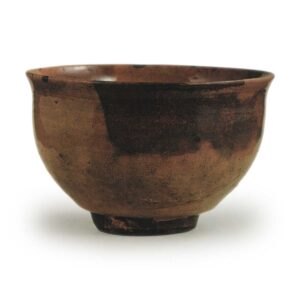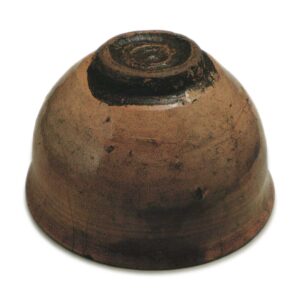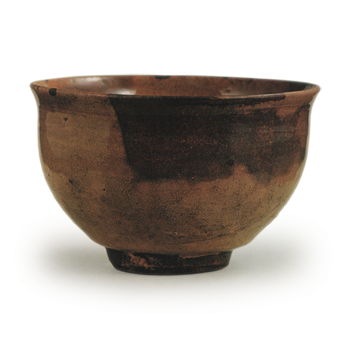

Height: 8.5-9.2cm
Diameter: 13.8-14.2cm
Outer diameter of foot: 5.7cm
Height of foot: 0.8-1.0cm
The Hanazuri is the most famous tea bowl from the Makumagawa region, and was praised by Kusama Waraku as “the best of the Hamgyeongdo region”. It has been widely praised by tea masters since ancient times as a famous bowl that represents the Kumagawa region. The Makumagawa is the main branch of the Kumagawa, and is characterized by its elegant Kumagawa shape and graceful style, and it is a tea bowl that demonstrates the true nature of the Kumagawa, with its dignified and refined appearance. Alongside Ido, Kumagawa has long been familiar to tea ceremony enthusiasts, and the Kumagawa shape has had a major influence on the styles of Ko-Karatsu, Ko-Hagi and early unglazed Korean-style copies. In particular, the hands of the Makumagawa style are deep and wide, and they are also praised for their elegant dignity, which is not seen in the Ido style, and they are also praised for their suitability for drinking tea.
The name “Komokae” (now called Komogae or Komogai) comes from the Japanese reading of the name of the Kumagawa River, which is close to Busan. Kumagawa prospered as a port for trade between Japan and Korea since the Muromachi period, and from around the Ōei era to the 13th year of the Tenbun era (although there was a temporary interruption during that time), a Japanese settlement was also established there, and many Japanese people lived there, so it was a place that was particularly familiar to our country. The name of the place was also called “Gomokae” in Japanese reading among the Japanese people. (from the ‘Hideyoshi Documents’), and it was because of the circumstances of being loaded onto ships from this Kumagawa Port that tea masters called this ware ‘Komokae’.
As for the Kumagawa production area, it is thought to be a kiln in the vicinity of Jinju (Gyeongsangnam-do) in terms of the clay, glaze and style of the ware. It is thought that the ware was transported from Jinju down the Nakdong River to Kumagawa Port.
Considering the close relationship between the people of the port of Ungcheon and the Japanese, it is thought that Ungcheon, like Ido and Mishima, was already being traded as early as the Muromachi period, when the tea ceremony was becoming popular. Like Ido and Mishima, the simple elegance of these pieces, which were born of the local area and were unaffected by the artistic intentions of their makers, would have been appreciated and enjoyed by the tea masters of the time, who were open-minded and simple-hearted.
The name “Hanazuri” was given by Kobori Bichūno-kami Muneyoshi, in reference to the purple stains on the dark loquat-colored glaze, after a poem by Lord Sanetoshi, a nobleman of the Imperial Court, from the “Shinsenzai Waka Shū” anthology, which goes “The purple color of the dew-drenched sleeves of the wild grass “Hagi flowers on the field of wild grass” is a poem by the nobleman Sanetoshi, and it is a truly appropriate name for this outstanding bowl, which is famous for its leak-proof design. The name ‘Kumagawa’ is so well known among tea ceremony enthusiasts that it is synonymous with ‘Hagi flowers on the field of wild grass’.
Although it is a rather elegantly shaped Kumagawa bowl with a slight outward curve, it is large and imposing, and it is indeed worthy of the throne of Kumagawa. The clay is a little thick for the shape, and although it is a fine white clay, it has been colored by use over the years. The foot ring is a clay-looking, bamboo-knotted design, and the inside is a characteristic round-cut finish unique to Kumagawa. The glaze is soft with fine cracks, which is said to be a characteristic of Shinshu ware. The round mirror-like depression in the interior of the tea bowl is a distinctive feature of Kumagawa ware. Small stones are embedded in the body, creating another scene. There are large cracks from the rim to the body, and there are also three small cracks and five lacquer repairs on the rim.
Accessories
Inner box, curved object, black lacquer, lid, peach design, body, grape squirrel design
Outer box, paulownia wood, calligraphy, Kobori Bichu no Kami Muneyoshi
(There are two theories that it was originally owned by Motoda Oki no Kami and later passed down through the Konoike family, and it was later known to the world through the Konoike family. In the autumn of 1963, it was displayed at the Kyoto venue of the Koetsu-kai exhibition.



